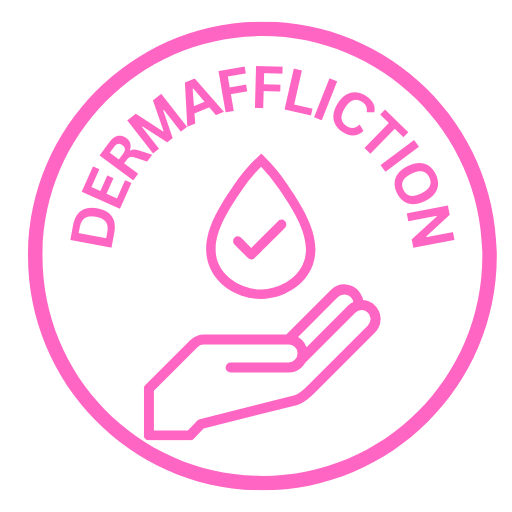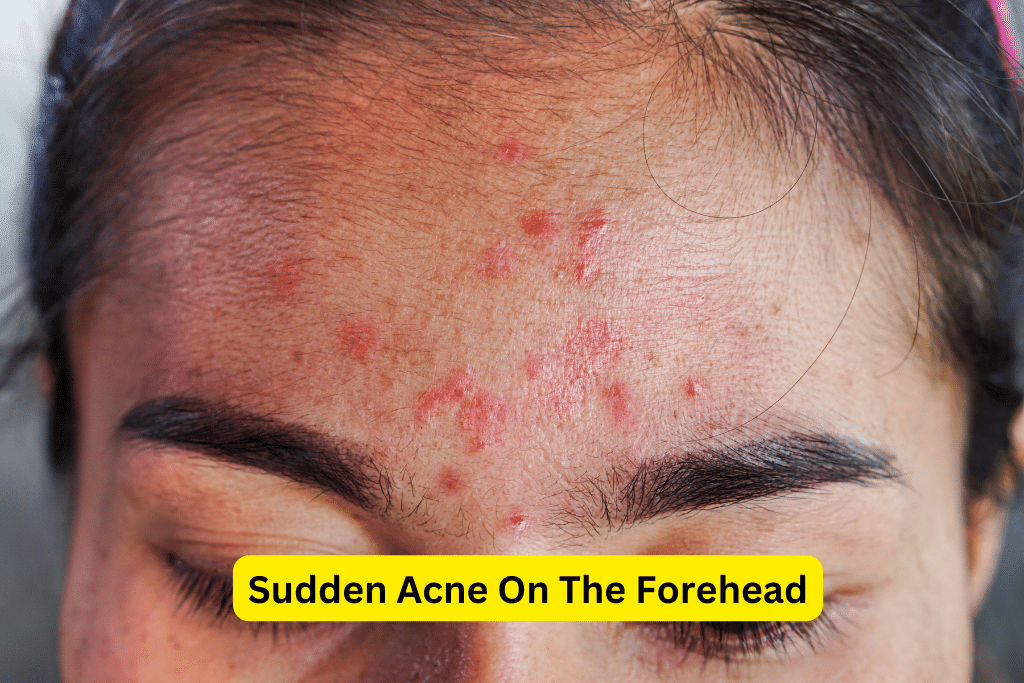Understanding Sudden Forehead Acne: Causes, Treatment, and Prevention
Sudden Acne On The Forehead
Sudden acne on the forehead can be a frustrating and distressing skin condition. It appears out of nowhere, leaving individuals searching for answers and solutions. This article aims to provide a comprehensive understanding of sudden acne on the forehead, including its causes, symptoms, prevention, and treatment options.
Addressing and treating sudden acne issues is important to not only improve the appearance of the skin but also prevent potential scarring and emotional distress. By identifying the root causes and implementing the right strategies, it is possible to manage and even prevent forehead acne outbreaks.
Causes of Sudden Acne on the Forehead
There are several factors that can contribute to the sudden onset of acne on the forehead. Understanding these causes can help individuals tailor their approach to prevention and treatment:
Hormonal changes and imbalances
Hormonal fluctuations play a significant role in the development of acne, particularly on the forehead. During periods of hormonal changes, such as puberty, the menstrual cycle, or pregnancy, the body produces excess sebum, a natural oil that can clog pores and lead to acne.
Poor skincare routine
A lack of proper skincare routine can also contribute to sudden acne on the forehead. Failure to cleanse the face regularly or using harsh skincare products can irritate the skin, leading to breakouts.
Dietary factors
The foods we eat can also impact the occurrence of acne on the forehead. High glycemic index foods, such as sugary snacks and refined carbohydrates, can trigger hormonal changes and inflammation in the body, leading to acne outbreaks. Additionally, dairy products have been associated with an increased risk of acne.
Environmental factors
External factors, such as pollution, sweat, and humidity, can contribute to forehead acne. Pollution can clog pores and irritate the skin, while excessive sweating and high humidity can create a breeding ground for bacteria and oil buildup.
Stress and anxiety
The mind-body connection is evident in acne development. Stress and anxiety can disrupt hormonal balance, increase inflammation, and impair the skin’s ability to heal, making individuals more susceptible to sudden acne outbreaks on the forehead.
Symptoms and Types of Sudden Acne on the Forehead
Common symptoms
Sudden acne on the forehead is typically characterized by various symptoms, including red and inflamed bumps, as well as whiteheads and blackheads. These may appear individually or in clusters.
Types of forehead acne
Forehead acne can manifest in different forms, each requiring a specific approach to treatment:
Comedones
Comedones, also known as blackheads and whiteheads, are the most common type of forehead acne. These occur when the hair follicles become clogged with dead skin cells, oil, and bacteria, resulting in the formation of small bumps.
Papules and pustules
Papules appear as small, raised bumps on the forehead, often red or pink in color. Pustules, on the other hand, are similar in appearance but contain pus. These types of acne can be painful and may leave behind marks or scars if not properly treated.
Cysts and nodules
In severe cases, forehead acne may develop into cysts and nodules. These are large, painful, and deep-rooted acne lesions that can cause significant inflammation and scarring.
Prevention and Treatment of Sudden Acne on the Forehead
Establishing a proper skincare routine
A proper skincare routine is crucial in preventing and managing sudden acne on the forehead:
Cleansing
Regularly cleansing the face with a gentle cleanser helps remove excess oil, dirt, and bacteria without stripping the skin of its natural moisture. It is recommended to wash the face twice a day, in the morning and evening.
Exfoliating
Gentle exfoliation can help remove dead skin cells and unclog pores. However, it is important to avoid over-exfoliating, as it can irritate the skin and worsen acne. Exfoliating 1-2 times a week is sufficient for most individuals.
Moisturizing
Moisturizing the skin is essential to maintain a healthy moisture balance and prevent dryness. Look for non-comedogenic moisturizers that won’t clog pores.
Avoiding triggering factors
Several factors can trigger sudden acne outbreaks on the forehead:
Choosing skincare products wisely
Avoid using skincare products that contain harsh chemicals or comedogenic ingredients. Opt for non-comedogenic and oil-free products that won’t clog pores.
Maintaining a balanced diet
Eating a balanced diet that is low in high glycemic index foods and dairy products can help reduce forehead acne. Instead, incorporate fruits, vegetables, whole grains, and lean proteins into your meals.
Protecting the skin from environmental pollutants
Wearing sunscreen daily and protecting the face from pollution can prevent clogged pores and inflammation. Use a broad-spectrum sunscreen with at least SPF 30 and seek shade when pollution levels are high.
Home remedies for forehead acne
There are several home remedies that individuals can try to manage forehead acne:
Tea tree oil
Tea tree oil has antimicrobial properties that can help reduce acne-causing bacteria. Apply a small amount of diluted tea tree oil to the forehead using a cotton swab.
Aloe vera gel
Aloe vera gel has soothing and anti-inflammatory properties. Applying a thin layer of aloe vera gel to the forehead can help reduce redness and inflammation associated with acne.
Apple cider vinegar
Apple cider vinegar can act as a natural exfoliant and help balance the skin’s pH levels. Mix equal parts of apple cider vinegar and water, apply to the forehead using a cotton ball, and rinse off after a few minutes.
Over-the-counter and prescribed treatments
Topical creams and gels
Over-the-counter creams and gels containing ingredients like benzoyl peroxide, salicylic acid, or retinoids can effectively treat mild to moderate forehead acne. These products work by reducing inflammation, unclogging pores, and promoting skin cell turnover.
Oral medications
In more severe cases, dermatologists may prescribe oral medications, such as antibiotics or hormonal contraceptives, to manage hormonal imbalances and reduce inflammation.
Professional treatments (such as laser therapy)
In cases of persistent acne or scarring, professional treatments like laser therapy or chemical peels may be recommended to target deep-seated acne and reduce the appearance of acne scars.
When to See a Dermatologist
Severe and persistent acne
If sudden acne on the forehead is severe, persistent, or not responding to over-the-counter treatments, it is advisable to seek the help of a dermatologist. They can prescribe stronger topical medications or oral treatments tailored to the individual’s needs.
Acne causing emotional distress
Acne can significantly impact an individual’s self-esteem and emotional well-being. If forehead acne is causing emotional distress, it is important to consult with a dermatologist who can provide appropriate support and treatment options.
Acne impacting daily activities
If forehead acne is interfering with an individual’s daily activities or causing physical discomfort, seeking professional help can help alleviate symptoms and improve quality of life.
Lifestyle Changes to Prevent Sudden Acne on the Forehead
Managing stress levels
Stress can exacerbate acne outbreaks. Practicing stress management techniques such as meditation, exercise, and deep breathing can help reduce stress levels and prevent sudden acne on the forehead.
Maintaining a healthy diet
Eating a balanced diet rich in fruits, vegetables, whole grains, and lean proteins can support overall skin health and reduce the risk of acne. Avoiding sugary snacks and high glycemic index foods can also help prevent forehead acne.
Regular exercise and physical activity
Regular exercise improves blood circulation, reduces stress levels, and promotes a healthy complexion. Engaging in physical activity can also help regulate hormonal balance, preventing sudden acne outbreaks.
Proper hair care regime
Keeping the hair clean, avoiding excessive use of hair styling products, and tying the hair back can prevent oils and products from clogging the pores on the forehead, reducing the risk of acne.
Conclusion
Sudden acne on the forehead can be a frustrating and distressing condition. By understanding the causes, symptoms, prevention, and treatment options, individuals can take proactive measures to manage and prevent forehead acne outbreaks. A proper skincare routine, avoiding triggering factors, and making lifestyle changes can significantly improve the overall appearance and health of the skin. Seeking the assistance of a dermatologist can provide further guidance and support in managing sudden acne on the forehead. Remember, early intervention and a consistent skincare routine are key to maintaining healthy, acne-free skin.









